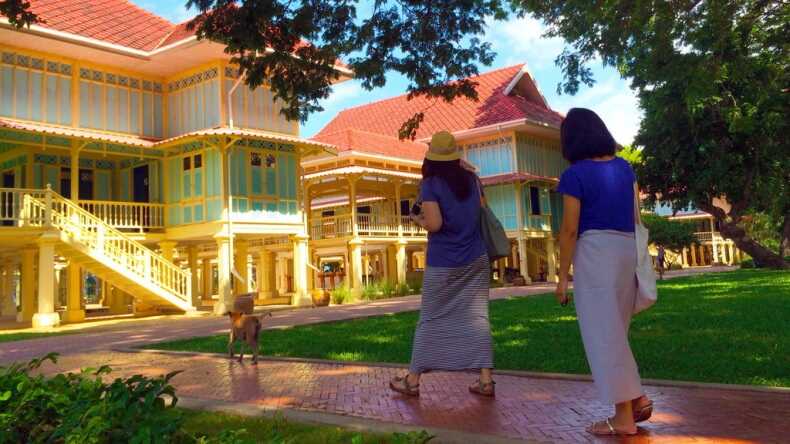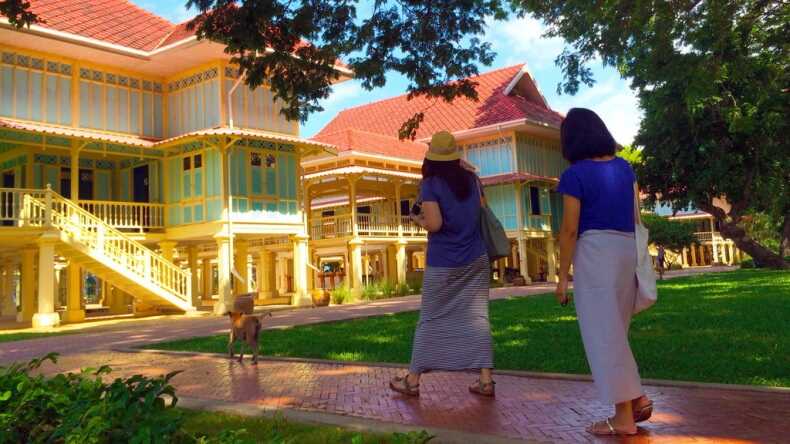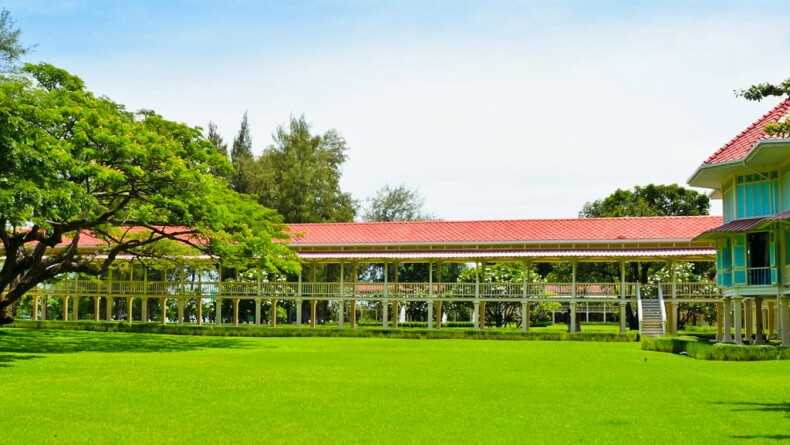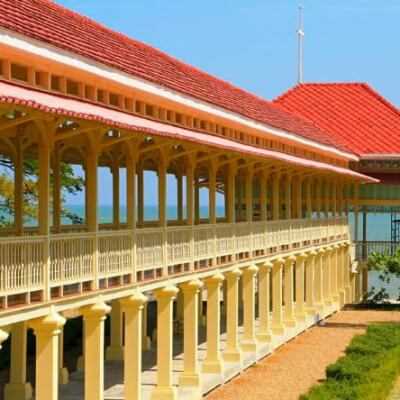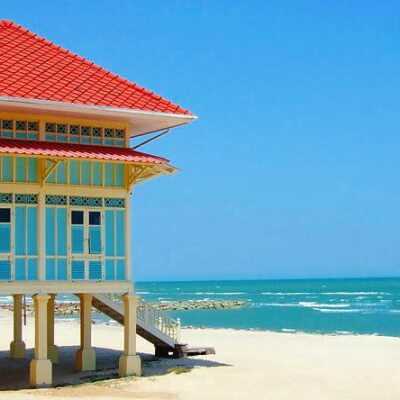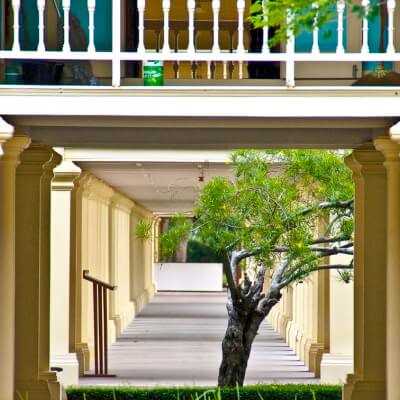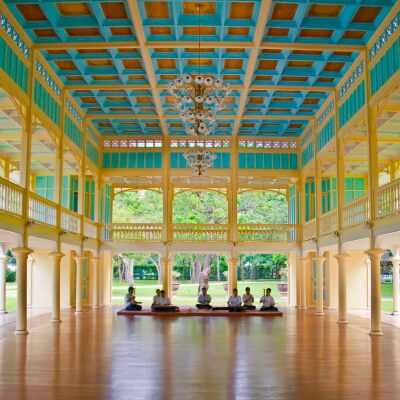The Mrigadayavan Palace was built by King Rama VI (Vachiravudh) between Cha Am and Hua Hin in 1923.
First, King Rama VI built the Palace on Hat Chao Samran Beach, but was dissatisfied with the final result and decided to tear it down and build a new teak palace overlooking the sea in Cha Am district. The location turned out to be very convenient because Cha-Am is connected to Bangkok by the Thai railway and the area is surrounded by a forest of mangrove trees, which was dominated by fresh sea air.
The Royal Palace in Hua Hin is built predominantly on pillars and is made entirely of teak wood. Its very attractive architectural style is quite different from other Thai palaces.
The overall design of the Teak Palace in Hua Hin was designed by the King himself, with high ceilings for good ventilation and niches filled with water at each pillar. This was done to discourage ants. To complete the project, King hired Italian architect Ercole Manfredi.
King Rama VI used the Royal Teak Palace as a summer residence for himself and the royal family until his death in 1925.
Description of the Teak Palace in Hua Hin
The Royal Palace in Hua Hin, also called The Palace of Love and Hope, consists of three sections connected by long corridors. One corridor connects to the beach, the second to the King’s private room, and the third to the women’s section of the Palace:
- The Phisarn Sakorn section consists of King Rama VI’s private rooms, which are the bedroom, bathroom, dressing room, study and dining room. King Rama VI, who ruled Thailand from 1920 to 1925, was a great poet and wrote literature about his explorations and admired the sea while staying in his Phakorn Palace.
- Samundra Biman section, where Rama VI’s wife, Queen Indrasakdi Sachi, lived, contains a series of rooms with a living room, bedroom, dressing room and bathroom, as well as a corridor leading to the beach.
- The Sewakamart section contains rooms for work, as well as a theater in which dramas were played.
After the king died in 1925, the Teak Palace in Hua Hin was left empty. These days, it has been fully restored and is now a major attraction in the city. Some of the King’s furniture can still be seen in it, including, his desk with pencils and papers, as well as his sofa and bed.
Tourist Reception Times
.
Walking around the Teak Palace in Hua Hin will give you some insight into how the royal family lived in the 1920s. After visiting the Palace, you can enjoy a stroll along a nature trail surrounded by mangrove forests.
The Royal Palace in Hua Hin can be visited every day except Wednesday from 8 am to 4 pm, Saturday and Sunday until 5 pm. Until recently, admission cost 60 baht per person. The Palace has a certain dress code: no shorts, short skirts or T-shirts are allowed indoors, and you may be offered a sarong at the entrance. Also, at the entrance to the Royal Palace you have to take off your shoes (this is an ancient Thai tradition at the entrance to the premises). You can put your shoes in a cloth bag given right at the stairs, you will have to carry it with you all the way out.
Philoting inside the Teak Palace in Hua Hin is prohibited. Also, to explore the area and the surrounding mangrove forests, you can rent bicycles.
How to get to the Royal Palace in Hua Hin
The Royal Palace is located almost halfway between Cha Am and Hua Hin in Petchaburi Province, about 10 kilometers south of Cha Am and 15 kilometers north of Hua Hin in King Rama VI’s military camp. You can easily and quickly get here by any Thai taxi or tuk-tuk. Between Cha-Am and Hua Hin, there are orange-colored buses that can stop at the Teak Palace at the passenger’s request. From Bangkok, you can get either by cab (the journey takes about three hours) or by train from Hualamphong station to Cha-Am, and from there by tuk-tuk.
You can also take the train from Hualamphong station to Cha-Am.
If after seeing the sights of Hua Hin you plan to continue your journey to the Thai capital, be sure to visit the oldest King’s Palace of Bangkok, construction of which began back in 1782 under King Rama I. Nowadays, this palace complex is the soul and heart of the entire Thai kingdom, a place of pilgrimage for Buddhists and a popular tourist attraction.
The palace complex is the heart and soul of the entire Thai kingdom.
Read More:
